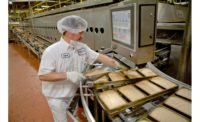Consultants Corner
Make time for employee training

Production dates, yields, customers, inspectors, food safety, regulations, payroll, human resources, the books — there never seems to be enough time in the day. Throw all that work in with ensuring employees are properly and consistently trained and a person is looking at a monster of a daily schedule. But when an employee does not have proper training or direction, business strategies can go awry.
To prevent this, continual, consistent and focused training is necessary to facilitate accuracy of projections, operations and food safety. It can be difficult in the moment of daily production to slow down and explain reasoning, especially when everyone involved is working as fast as they can. After all, the higher the production, the more revenue rolls in.
There are too many examples to list that detail what can go wrong because of a lack of training. But let’s take an obvious example: recalls.
Imagine that a control point check is set at a labeling step, at which employees applying the labels and packaging the products are supposed to check for allergen ingredients in the package against the ingredient statement. If an employee isn’t adequately trained, there is the chance that an item may be mislabeled, or a label lackadaisically applied, with the result being undeclared allergens in commerce. As we are all too aware, this ultimately ends in a recall, poor public relations, loss of consumer confidence and other unwanted outcomes.
Bottom line: It is better to have an employee trained correctly for each task that they are to perform than it is to have a loss of revenue because of an action that could have been prevented. It is clear that scheduled, consistent training for all employees is necessary. And facilities should not forget to document the training time. Your auditors will ask to see it.
Teaching an employee to correctly collect microbial swabs also is important. With new testing methods on the market, there is a real chance of an untrained employee incorrectly collecting a critical sample. The hassle then begins to conduct a corrective action, create a new sampling plan and follow through when it could all have been prevented. It’s important to train employees initially, conduct ongoing training to prevent, eliminate or reduce bad habits, and train when a procedure is changed to ensure employees understand the new process.
When creating training programs, there are many factors to consider. Depending on the area and competency of an employee, training should occur at a minimum upon hiring, during operations when tasks are not being completed correctly, on an interval basis but no less than annually and when changes are made to business or production practices.
Your training program might look something like this:
- Onboarding: basics of business practices, your culture;
- Initial: Job-specific responsibilities;
- Monthly: Job-specific plus an area of focus for business practices; proper workplace etiquette, for example;
- Semi-annual: Emphasis of business practices; safety, for example;
- Annual: Focused on changes to business practices;
- Spot training: as needed to correct practices or change practices;
- Advanced training: Identified employees receive training to further their abilities.
It seems like a lot, but many production facilities are already following this checklist.
This proactive training approach should address any employee weaknesses and develop a more confident, skilled workforce. One could argue with confidence comes happiness, and employee longevity in a company will arguably increase, therefore ultimately reducing the time spent training employees. The end goal is to implement a cohesive, comprehensive training program to create efficient production, increase profits, reduce food safety issues and mitigate risks. NP
Looking for a reprint of this article?
From high-res PDFs to custom plaques, order your copy today!





